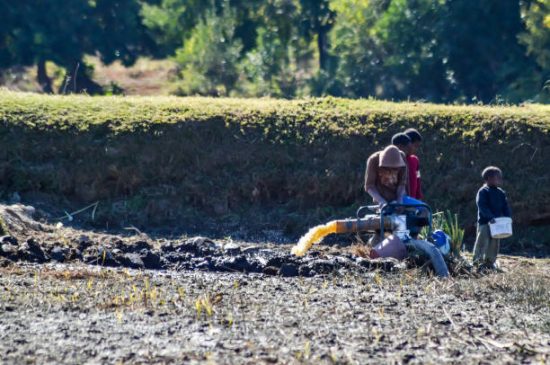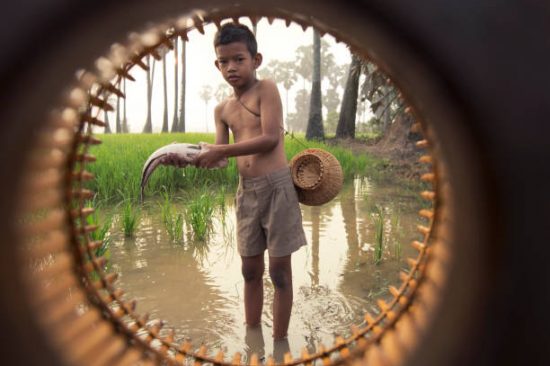We care for you and our planet
And together, we can build a better future for ourselves, our families, our children and everyone else!
Climate change profoundly impacts every individual, community and country and increasingly threatens global food & water security. Aquaculture relies on our finite water resources, and the past 20 years have seen some sustainability-related achievements, but there is still room for significant improvement. Aquaculture has been the primary source of fish for human consumption, with inland aquaculture accounting for 62.5% of the world’s farmed food fish production. The paradigm shift needed to achieve a long-term balance between today’s environmental protection needs and tomorrow’s food security needs has only just begun.
For aquaculture to be truly sustainable, we must achieve sustainability across three key dimensions: environmental, economic and social. Aquafort is fully committed to a more sustainable future by helping farmers farm fish sustainably. Our simple yet powerful technology stack ensures reduced impact on natural water resources while assisting farmers to achieve financial growth, self-sufficiency and responsible practices.
Real Issues to Tackle
Over half of the global population (4 billion people) live with less than 2 dollars per day and do not benefit from any form of social protection
Eight hundred eleven million people sleep hungry every night, and 448 million children are underweight. We also expect a 50 million metric ton supply gap in aquaculture by 2030
876 million adults are illiterate, two-thirds of which are women (579 million), and there’s a pressing, global lack of quality, accessible and affordable education
Women only account for only 19% of all fish farmers. Also, 25% of girls between 15-19 years of age (65 million) lack employment, education, and training, vs. 10% of boys of the same age (25 million). Also, the global gender pay gap stands at 23% globally, with expected 68 more years to achieve equal pay
Fewer than 45% (declining) of paid workers are on a full-time, permanent basis, and 600 million new jobs need to be created by 2030 to keep pace with the growth of the working-age population. Also, women’s labour force participation rate is 63% vs. men at 94%
2020 Global average temperature at 1.2 degrees Celsius above pre-industrial baseline, with a rapid increase in greenhouse gas emission. Also, most people lack awareness or knowledge to mitigate and prevent further damage due to climate change.
Enormous amounts of herbicides, pesticides & antimicrobials are dispensed into oceans every year, and our water eco-systems have been severely affected, resulting in tens of millions of fish and other aquatic species, flora and fauna dying each year
How Aquafort Addresses These Issues
⊕ Fish farming offers income opportunities and a pathway to self-sufficiency. Aquafort promotes and supports land-based farming in various ways.
⊕ AquaDemy & AquaZone are powerful and complimentary digital communities providing awareness to farming communities and offering farmers a gateway to affordable and accessible fish farming education.
⊕ Aquafort supports all farmers, irrespective of gender, age, creed or race. Our technology stack is designed to sustainably transform how farmers access information & services, make production decisions and interact with an entire value chain.
⊕ Aquafort aims to help farmers decrease their carbon footprint by providing them with the proper insight into their operations and needed financing to improve their general practices.
⊕ Aquafort supports sustainable fish farming, which offers income-earning opportunities and a pathway to self-sufficiency and self-reliance.
⊕ Aquafort’s revolutionary products help land-based farmers produce larger harvests and more sustainably, which helps address the industry’s 50 million metric ton supply gap that threatens global food security.
⊕ Land-based aquaculture represents 65% of the entire aquaculture industry, and supporting its growth will hasten the transition from ocean-based production, which is harmful to the marine biosphere.
Did You Know?


⊕ The FAO figures (2018) suggest that 59.5 million people are engaged in the primary sector of fisheries and aquaculture. Yet, only 14 percent of this number accounts for women.
⊕ Fish is crucial to a nutritious diet in many areas across the world. From 1961–2017, the average annual growth rate of total food fish consumption increased by 3.1 percent, outpacing the yearly population growth rate of 1.6 percent.
⊕ In per capita terms, food fish consumption rose from 9.0 kg (live weight equivalent) in 1961 to 20.3 kg in 2017. Preliminary estimates for per capita fish consumption in 2018 currently stand at 20.5 kg.
⊕ Total fish production is also expected to expand from 179 million tonnes in 2018 to 204 million in 2030. Aquaculture production is projected to reach 109 million tonnes in 2030, an increase of 32 percent (26 million tonnes) over 2018.
⊕ We expect a 50 million ton supply gap by the year 2030 and over 811 million people worldwide go to bed hungry every night. That is almost 10% of the global population.
⊕ Since 2016, aquaculture has been the primary source of fish for human consumption globally. In 2018, this share was 52 percent, a figure expected to continue to increase in the long term.
⊕ In 2018, inland aquaculture produced 51.3 million tonnes of aquatic animals, accounting for 62.5 percent of the world’s farmed food fish production, which refers to aquaculture produced from inland natural water sources, such as rivers and lakes, and fish farms.







